Do you own a pet rabbit, or hoping to own one soon? Follow our how-to guide to help you set up an indoor enclosure for your pet bunny.
The Rabbit Welfare Association and Fund recommend a minimum enclosure are of 3m x 2m x 1m for a pair of average-sized rabbits, regardless of whether they are housed indoors or outdoors. These are some options for setting up the home of your indoor rabbits or bunnies: free-ranging or within a particular room.
Options for Housing Indoor Rabbits:
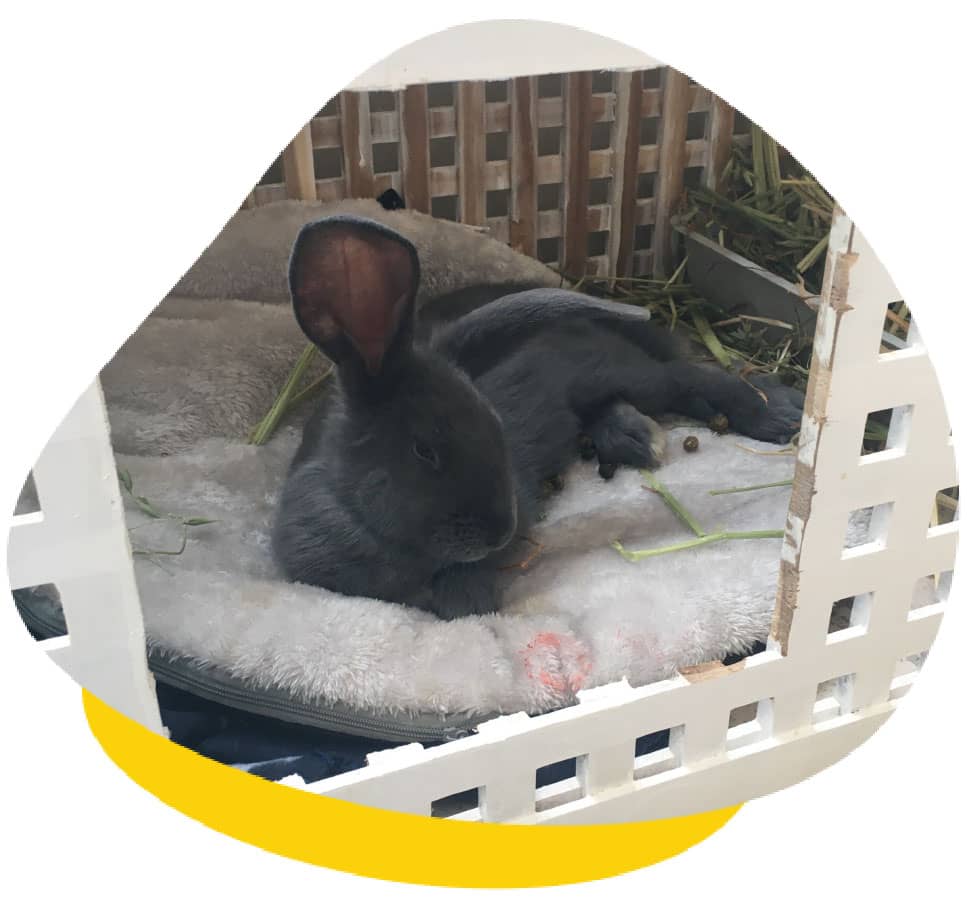
Free-range
This is when rabbits are given the run of most (or all) of the house. If you choose to opt for free-ranging rabbits, we strongly recommend starting with a limited area where they will have their toilet and carry out their litter training, especially with young rabbits.
Make sure they feel secure and comfortable there, and are toilet trained in the smaller area before opening up other areas of the house.
A Particular Room
This may be a laundry area, kitchen or conservatory/sunroom with solid flooring that is easy to clean (unlike carpet!). See comments on flooring below.
In the chosen room, it is imperative that the temperature can be monitored and adjusted appropriately. Rooms with large windows can get very hot during summer, and rabbits are prone to heat stress.
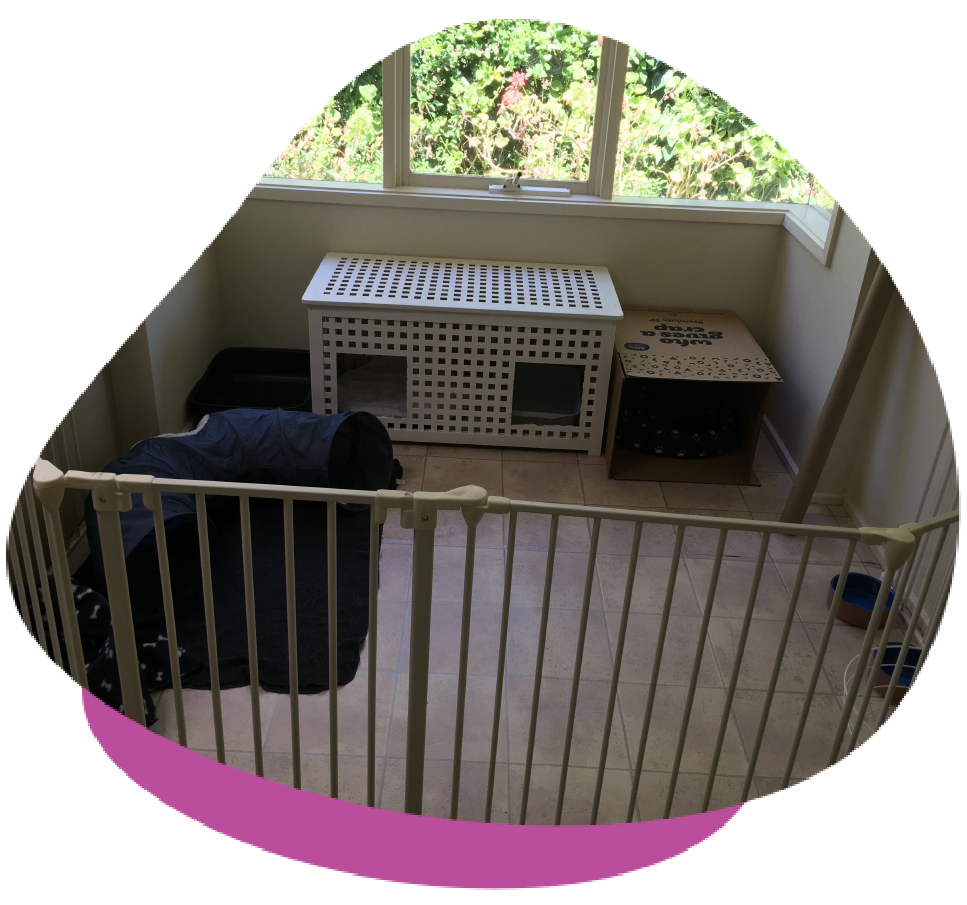
Preparation of an Indoor Area for Your Rabbits:
Your home needs to be protected from chewing (for the whole of your rabbits’ life) and toileting (until they are desexed and litter trained). This means your rabbits will be protected from danger and causing mischief.
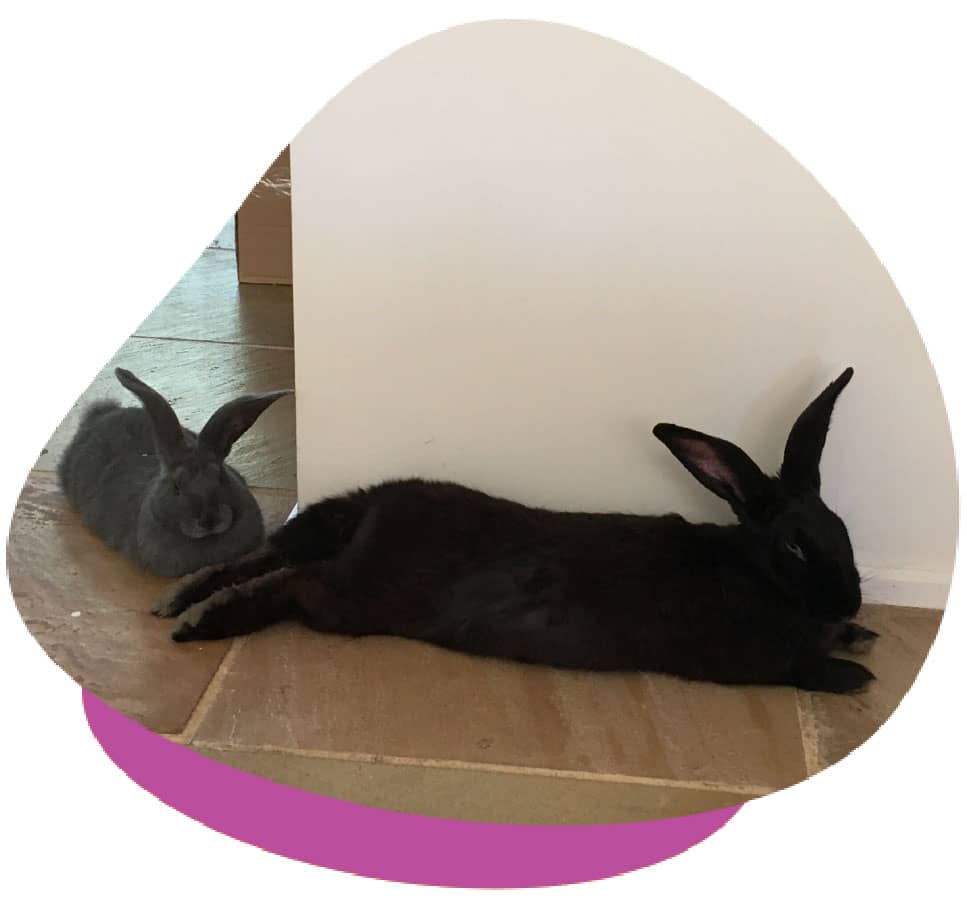
Flooring
This should be solid and easy to clean. Rabbits often slip-on smooth floors like tiles or wooden boards, so lino, newspapers, carpet tiles or runners may be useful.
Furniture
Wild rabbits live in underground burrows, so having a safe hiding spot is important for your indoor bunnies. Ideally, a hiding spot should include an entrance and an exit hole, so your rabbit doesn’t feel trapped while inside.
Cardboard boxes, modified cupboards, or soft cat/dog tunnels or beds may be suitable. Some soft bedding such as blankets, old sheets, or padded pet beds should be provided for your rabbits to rest on. Rabbits love height, so providing ramps or a small cupboard or hutch that they can jump on top of is a great idea.
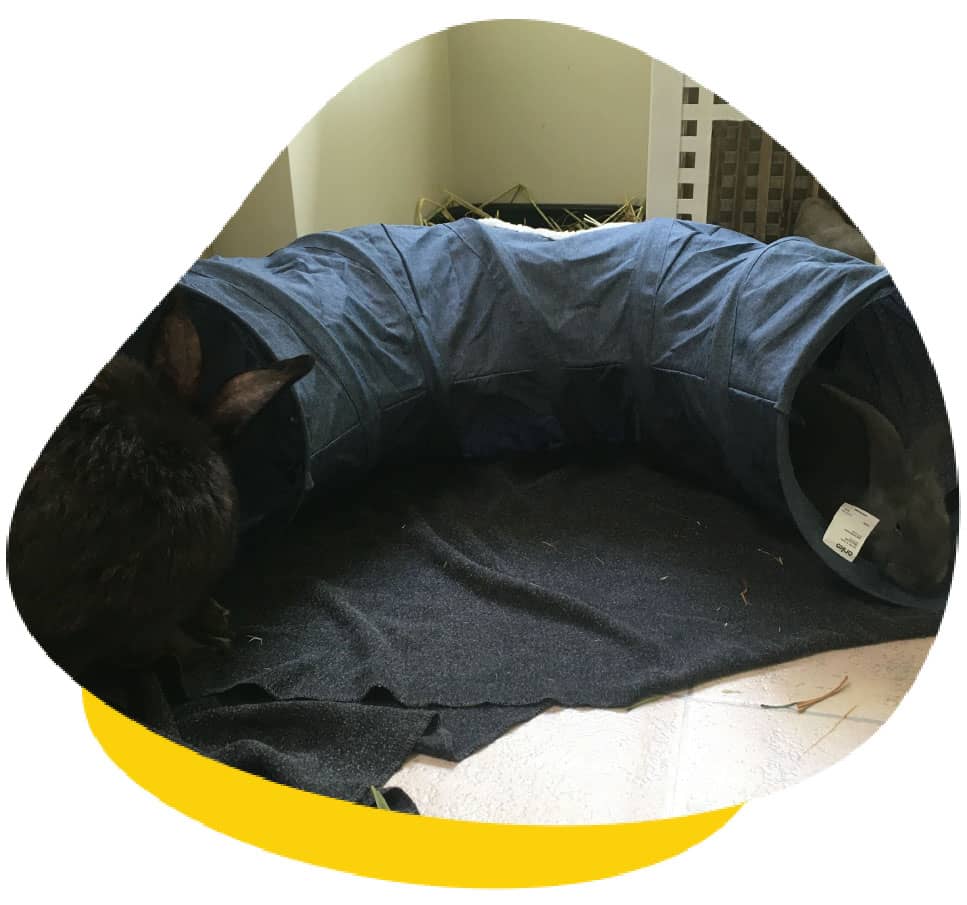
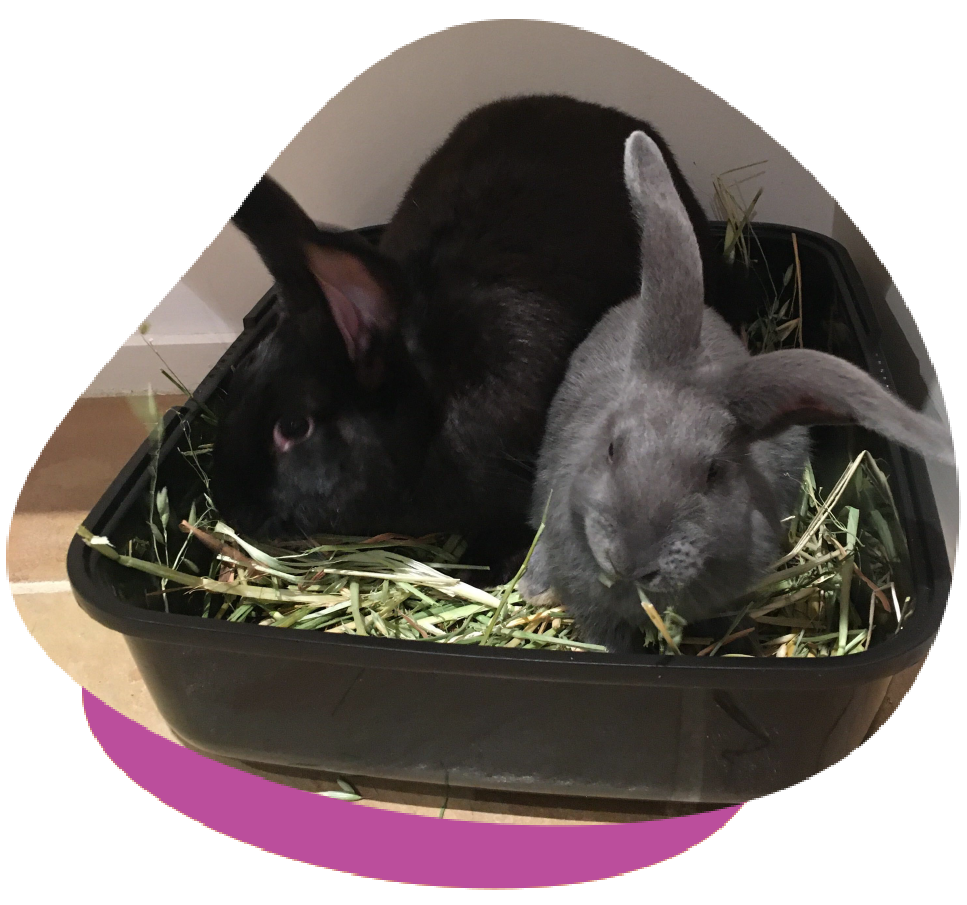
Food and Water Dishes
Food and water should be provided in bowls that easily washable, flat and wide. Hay racks should also be provided. Plastic bag storage holders or wall mounted flower baskets (available at hardware stores) are good ideas. Hay should be available at all times.
Litter Trays
Litter trays should be large tubs that are easy for your rabbit to climb in and out of and easy to clean. Plastic is ideal for these, and hay is the ideal substrate as rabbits love to ‘poo and chew’. Plus, it is biodegradable and makes great manure for the garden if you have one.
Ideally, there should be one tray per rabbit, plus at least one extra to prevent rabbits from fighting over resources.
Toys
Give your rabbits lots of toys and things that you don’t mind that they chew. Cardboard boxes are a cheap and easy solution, and your rabbits will love the ‘project’ of stripping the box down and creating holes. Willow or hay balls, tunnels and chews are also great.
Tunnels will encourage your rabbits to be much more active and also make an excellent substitute burrow. Hiding treats in old tissue boxes or egg cartons (with any plastic bits removed), and covering them with hay to allow digging and chewing behaviour, is also great for their environmental enrichment and mental stimulation.
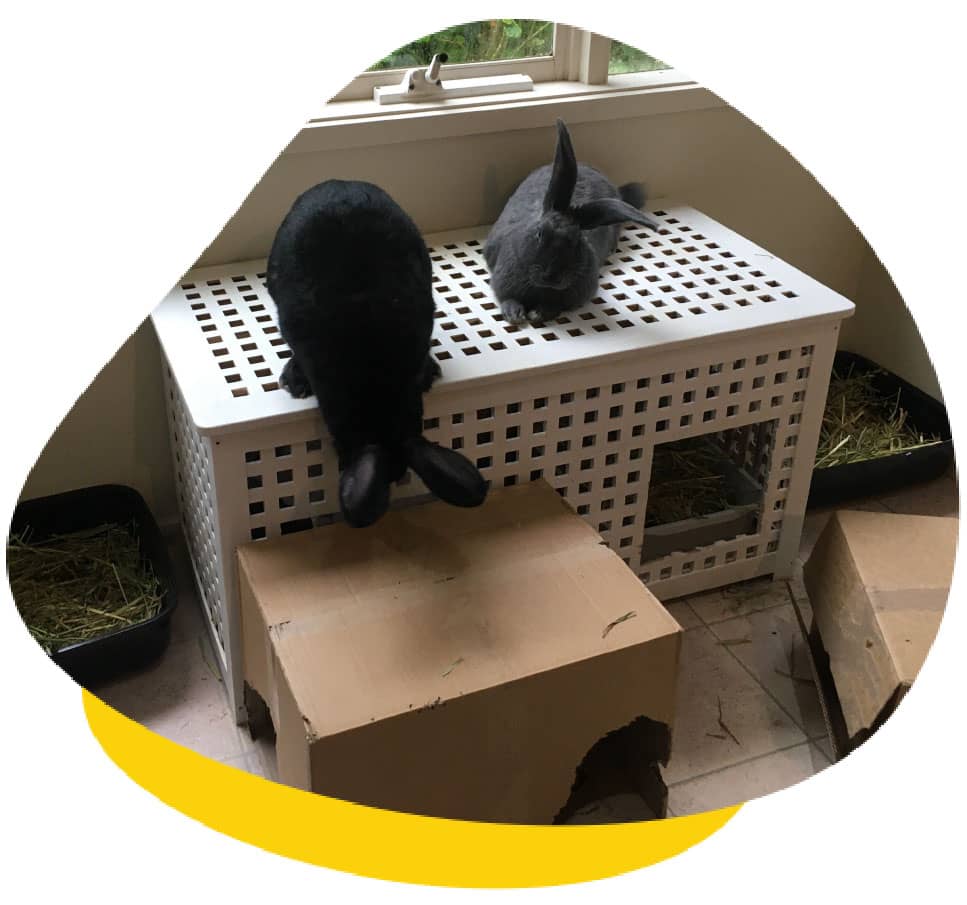
Other Things to Consider
Areas in your house that rabbits have access to will need some modifications, or your rabbits will modify them for you! Rabbit proofing your home is essential for you and your rabbits to live harmoniously together, but be aware there will be occasional nibbles, spills and potentially an occasional toileting accident….and don’t forget the hair during moulting season!
Younger bunnies are especially keen to explore things (generally with their teeth), so supervising them alone will not prevent damage or accidents. You do need to ‘rabbit proof’ properly.
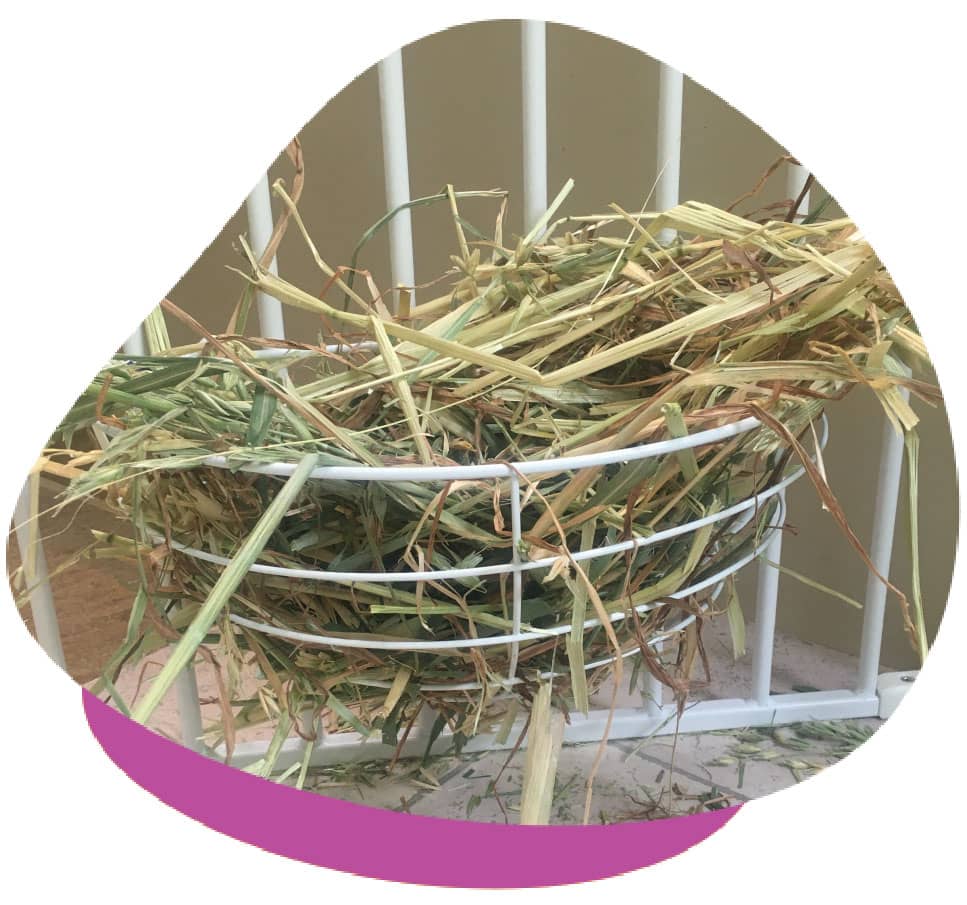
What Are the Symptoms to Watch Out for?
Remember that house rabbits need at least as much space as outdoor rabbits. Wherever you decide is most suitable, your rabbits need to be safe from:
- Other pets (rabbits are prey species so can get scared even by the smell of a cat or a dog)
- House plants that may be toxic
- Electrical wires and cables
- Being trodden on (this is more common than you might think!)
- Escaping into a dangerous outdoor environment

